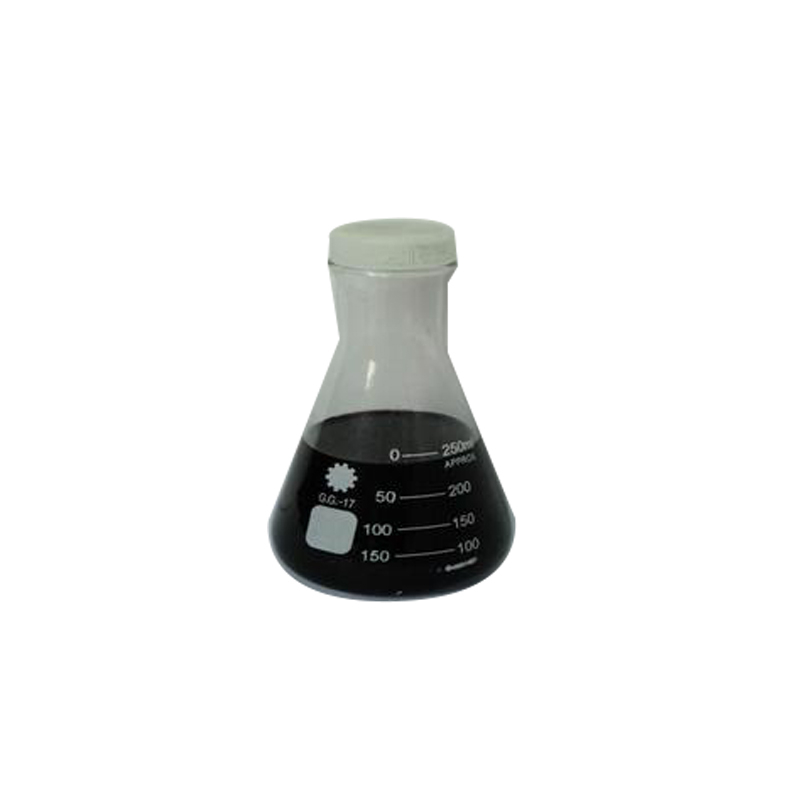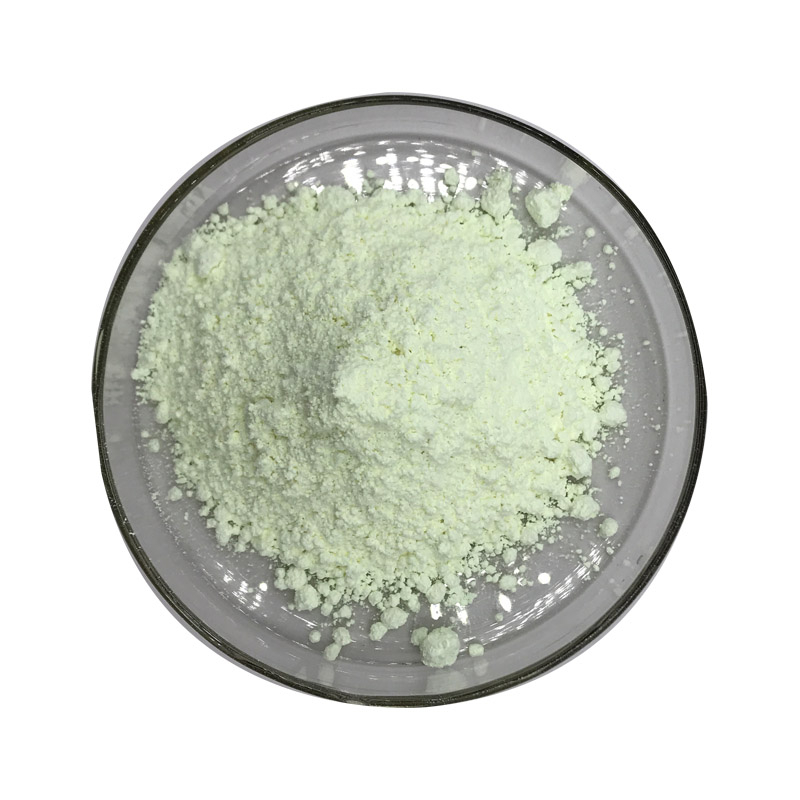Products Description of P-Phenylenediamine CAS#106-50-3 p-Phenylenediamine, also known as Urs D, is one of the simplest aromatic diamines. The pure product is white to light purple crystals, which turn purple or dark brown when exposed to air. It is slightly soluble in cold water, soluble in ethanol, ether, chloroform and benzene.It can be used to make azo dyes, high molecular polymers, fur dyes, rubber antioxidants and photo developers.
Contact Now
Products Description of Formaldehyde CAS#50-00-0Formaldehyde is the simplest aldehyde molecule with active chemical properties and certain toxicity. At room temperature, it is a colorless gas with a pungent odor, which easily undergoes polymerization to form polyformaldehyde. Formaldehyde is easily soluble in water, alcohol and other organic solvents.
Contact Now
Products Description of N,N-Diethyl-p-phenylenediamine sulfate CAS#6283-63-2White or light red crystals. Soluble in water, slightly soluble in alcohol. Easily oxidized to pink.
Contact Now
Products Description of N,N-Di-Sec-Butyl-P-Phenylenediamine CAS#101-96-2N,N-di-sec-butyl-p-phenylenediamine is a brown-red liquid. It is an amine antioxidant with excellent properties. It is especially suitable for use as an additive for cracking or thermal cracking gasoline (gasoline with high olefin content). It can effectively prevent olefin oxidation. Produce gel.
Contact Now
Products Description of 1,4-Benzoquinone CAS#106-51-4Parabenzoquinone is a quinone organic compound. Pure parabenzoquinone is a bright yellow crystal with a pungent smell similar to chlorine. Impure samples are often due to 1 :1 charge transfer complex) exists and the color is dim.
Contact Now
Products Description of p-Menthane-3,8-diol CAS#42822-86-6Menthanediol, also known as p-menthane-3,8-diol, abbreviated as PMD, has been included in the National Cosmetic Raw Materials Catalogue (2016) and the GB2760 Food Additives Catalogue, and can be used as a cooling agent in cosmetics and food.p-Menthane-3,8-diol Chemical PropertiesMelting point 82-83 °CBoiling point 267.6±8.0 °C(Predicted)density 1.009±0.06 g/cm3(Predicted)FEMA 4053 | P-MENTHANE-3,8-DIOLstorage temp. Sealed in dry,Room Temperaturesolubility Chloroform (Slightly), Methanol (Slightly)form&
Contact Now
Products Description of D-(-)-ERYTHROSE CAS#583-50-6D-erythrose-4-phosphate is an intermediate in the enzymatic conversion of carbohydrates.D-(-)-ERYTHROSE Chemical PropertiesMelting point <25℃Boiling point 144.07°C (rough estimate)alpha D20 +1° -14.5° (3 days, c = 11)density 1.0500 (rough estimate)refractive index 1.498storage temp. 2-8°Csolubility Methanol, Waterform syruppka12.49±0.20(Predicted)color light yellowWater Solubility Fully miscible in water.Sensitive HygroscopicMerck 14,3690BRN 1721698CAS DataBase Reference
Contact Now
Products Description of CALCIUM TITANATE CAS#12049-50-2Calcium titanate is an inorganic substance with the chemical formula CaTiO3. It belongs to the cubic crystal system and is a basic inorganic dielectric material with excellent dielectric, temperature, mechanical and optical properties.
Contact Now
Products Description of M-Phenylenediamine (m-PDA) CAS#108-45-2Meta-phenylenediamine is an important raw material for organic synthesis. It is mainly used as a dye intermediate to produce basic orange, basic brown G, direct sunfast black G and other dyes. It is also used as fur dye and epoxy resin. It is used as a curing agent, cement coagulant, mordant, color developer, etc.
Contact Now
Products Description of 4-Chloro-3-methylphenol CAS#59-50-7Colorless crystal. The melting point is 66°C (55.5°C), the boiling point is 235°C, 1g can be dissolved in 250ml of water at 20°C, more dissolved in hot water, and easily soluble in benzene, ether, ethanol, acetone, chloroform and petroleum ether. Can evaporate with water vapor. Used in organic synthesis, such as dyes, film preservatives, etc. Used as pharmaceutical preservative1.
Contact Now
EDTA-4Na CAS#67401-50-7Overview:EDTA-4Na, with the chemical formula C10H19N2NaO9 and CAS number 67401-50-7, is a widely recognized chelating agent known as edta4na or 4na edta.
Contact Now
Epichlorohydrin CAS# 106-89-8Epichlorohydrin is a sort of organochlorine compound as properly as epoxide. It can be used as an industrial solvent. It is a exceptionally reactive compound, and can be used for the manufacturing of glycerol, plastics, epoxy glues and resins, and elastomers. It can additionally be used for the manufacturing of glycidyl nitrate and alkali chloride, used as the solvent of cellulose, resins, and paint as properly as being used as an insect fumigant.
Contact Now
Products Description of Para Chloro Phenol (4-Chloro Phenol) CAS#106-48-9Parachlorophenol, also known as 4-chlorophenol, is an organic compound with the chemical formula C6H5ClO. It is a white crystalline powder, slightly soluble in water, easily soluble in ethanol, ether, chloroform, and benzene.
Contact Now
Products Description of D(+)-Glucose CAS#50-99-7Glucose is a six-carbon sugar containing an aldehyde group with a molecular formula of C6H12O6. It is the most important monosaccharide in living organisms. Its main function is to provide energy required for physiological activities of the body. It is known that the complete oxidation of 1 mol of glucose releases energy of 2870kJ (686kCal), accounting for 70% to 80% of the total energy required by the body.
Contact Now
Products Description of Guanidinehydrochloride99.5% CAS#50-01-1Guanidine hydrochloride, chemical name is carbamidine hydrochloride, is a white or slightly yellow block, almost insoluble in acetone, benzene and ether. It can be used as an intermediate for medicines, pesticides, dyes and other organic synthesis. It is an important raw material for the manufacture of sulfadiazine, sulfamethylpyrimidine, sulfadimethylpyrimidine and other drugs and folic acid.
Contact Now
Products Description of p-Cymene CAS#99-87-64-isopropyltoluene is an organic compound with the chemical formula C10H14. It is a colorless and transparent liquid, insoluble in water, soluble in ethanol, ether, acetone, chloroform and other organic solvents. It is mainly used in organic synthesis and preparation of paint thinners.
Contact Now
Products Description of Ethylenediaminetetraacetic acid tetrasodium salt trihydrate CAS#67401-50-7Tetrasodium EDTA is a white powder that can be used as a hard water softener, a multivalent chelating agent, a fixing solution for bleaching in color photosensitive materials, and an activator for styrene-butadiene rubber.Ethylenediaminetetraacetic acid tetrasodium salt trihydrate Chemical PropertiesMelting point >300° Cstorage temp. Store at room temperaturesolubility Soluble in water.form powdercolor WhitePH10.0 to 12.0(5 g/L, 25 deg-C)CAS DataBase Reference67401
Contact Now
Products Description of 4-Dimethylaminopyridine CAS#1122-58-34-dimethylaminopyridine, commonly referred to as DMAP, is a strong nucleophilic acylation catalyst. The resonance of the electron-donating dimethylamino group with the parent ring (pyridine ring) can strongly activate the nitrogen atoms on the ring for nucleophilic substitution, and significantly catalyze the acylation/esterification of alcohols and amines/acids with high resistance and low reactivity, with the activity of about 104~106 times that of pyridine.
Contact Now
Products Description of Boric acid CAS#11113-50-1Boric acid is also called "orthoboric acid". It is derived from the interaction between natural borax (sodium borate) and acid. Soluble in water, ethanol and glycerin. The aqueous solution is acidic and is a monovalent weak acid. Solubility in water increases with temperature. Heated to 169℃ (±1℃), dehydration will produce metaboric acid, and 300℃ will form boric anhydride. Neutralize with strong base to obtain metaborate.
Contact Now
Products Description of N,N-DiMethyl-p-toluidine CAS#99-97-8N,N-dimethyl-p-toluidine is an organic compound with the chemical formula C9H13N.
Contact Now
Products Description of Diammonium 2,2'-azino-bis(3-ethylbenzothiazoline-6-sulfonate)CAS#30931-67-0ABTS diammonium salt is a substrate for horseradish peroxidase (HRP).Diammonium 2,2'-azino-bis(3-ethylbenzothiazoline-6-sulfonate) Chemical PropertiesMelting point >181oC (dec.)storage temp. 2-8°Csolubility H2O: 50 mg/mL, very slightly hazy, greenform tabletcolor Pale Green to Light GreenPHpH(50g/l, 25℃) : 5.0~6.0Water Solubility Dissolve in water at 50mg/ml.
Contact Now
1H-Benzotriazole CAS #95-14-71H-Benzotriazole is prepared by the reaction of o-phenylenediamine with nitrous acid in dilute sulfuric acid. Damschrodner and Peterson were able to synthesize the 1H-benzotriazole in a high yield (80%) by nitrosation of o-phenylenediamine with sodium nitrite in glacial acetic acid and water.1H-Benzotriazole is an anticorrosive agent, which is useful in aircraft deicing and antifreeze fluids. It is also employed in dishwasher detergents.
Contact Now
Products Description of N,N'-Dimethylpiperazine CAS#106-58-1N,N'-dimethylpiperazine is a flammable liquid that is more flammable when exposed to open flames, high temperatures, and oxidants; combustion produces toxic nitrogen oxide fumesN,N'-Dimethylpiperazine Chemical PropertiesMelting point -1 °CBoiling point 131-132 °C750 mm Hg(lit.)density 0.844 g/mL at 25 °C(lit.)vapor pressure 20 hPa (20 °C)refractive index n20/D 1.4463(lit.)Fp 65 °Fstorage temp. Store below +30°C.solubility miscibleform Liqu
Contact Now
Products Description of 1,3-Butanediol CAS#107-88-0Transparent colorless hygroscopic viscous liquid with a weak special taste. Almost odorless. Boiling point 207.5℃, relative density (4:1.0059, refractive index (nD20) 1.4401, freezing point <-50℃, flash point 121.1℃. Has a certain antibacterial effect.
Contact Now

































